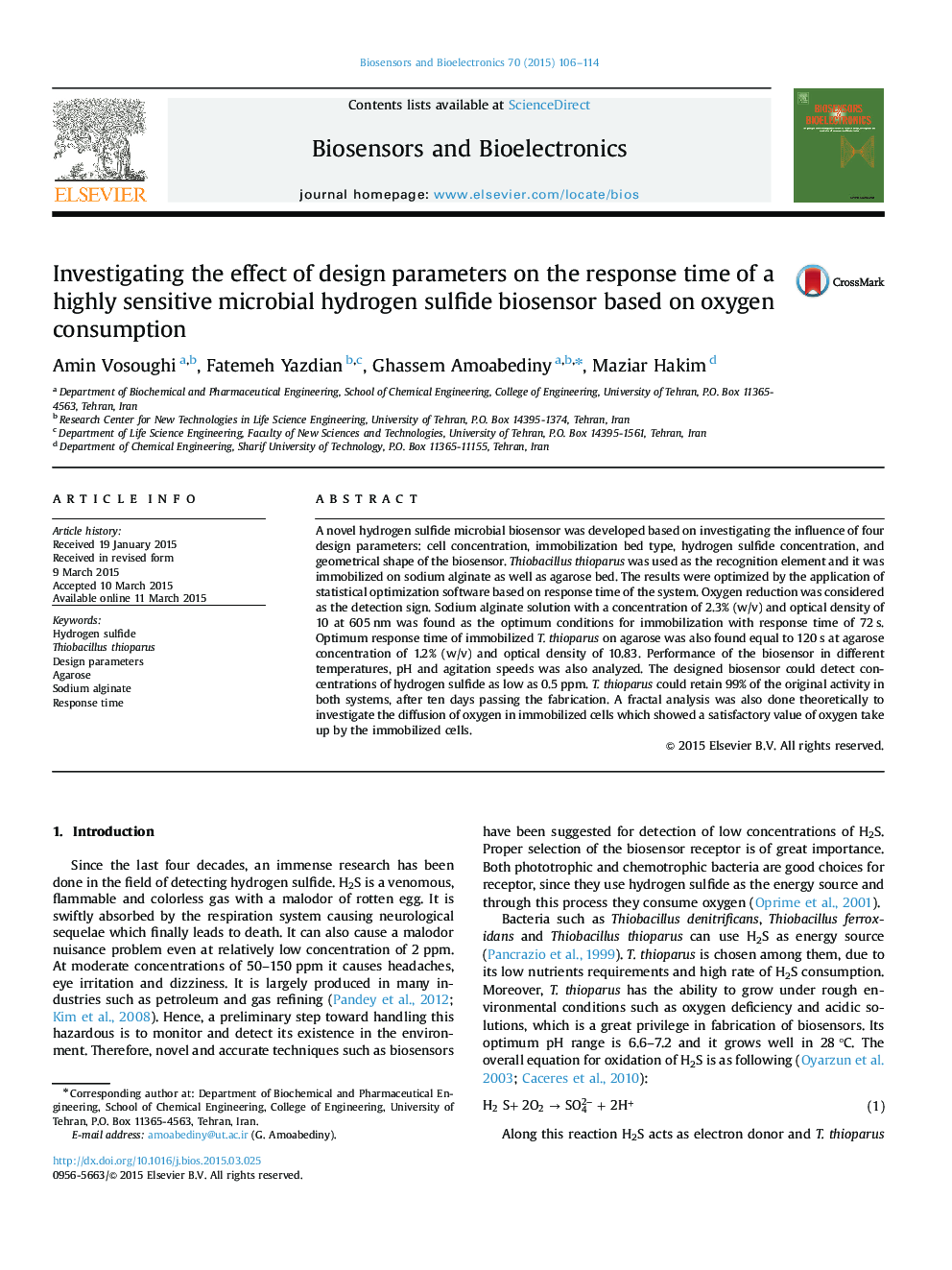| Article ID | Journal | Published Year | Pages | File Type |
|---|---|---|---|---|
| 7231941 | Biosensors and Bioelectronics | 2015 | 9 Pages |
Abstract
A novel hydrogen sulfide microbial biosensor was developed based on investigating the influence of four design parameters: cell concentration, immobilization bed type, hydrogen sulfide concentration, and geometrical shape of the biosensor. Thiobacillus thioparus was used as the recognition element and it was immobilized on sodium alginate as well as agarose bed. The results were optimized by the application of statistical optimization software based on response time of the system. Oxygen reduction was considered as the detection sign. Sodium alginate solution with a concentration of 2.3% (w/v) and optical density of 10 at 605Â nm was found as the optimum conditions for immobilization with response time of 72Â s. Optimum response time of immobilized T. thioparus on agarose was also found equal to 120Â s at agarose concentration of 1.2% (w/v) and optical density of 10.83. Performance of the biosensor in different temperatures, pH and agitation speeds was also analyzed. The designed biosensor could detect concentrations of hydrogen sulfide as low as 0.5Â ppm. T. thioparus could retain 99% of the original activity in both systems, after ten days passing the fabrication. A fractal analysis was also done theoretically to investigate the diffusion of oxygen in immobilized cells which showed a satisfactory value of oxygen take up by the immobilized cells.
Related Topics
Physical Sciences and Engineering
Chemistry
Analytical Chemistry
Authors
Amin Vosoughi, Fatemeh Yazdian, Ghassem Amoabediny, Maziar Hakim,
